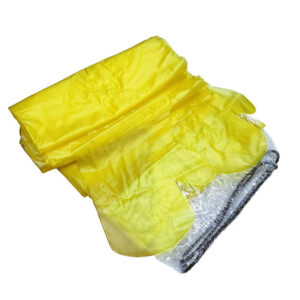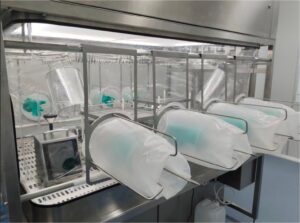Operating a cleanroom facility without properly installed and maintained equipment is like performing surgery with unsterilized instruments—the consequences can be catastrophic. Whether you’re managing a pharmaceutical manufacturing plant, semiconductor fabrication facility, or biotechnology laboratory, your cleanroom’s performance depends entirely on the precision of your equipment installation processes and ongoing maintenance protocols.
The stakes couldn’t be higher. A single contamination event can cost pharmaceutical companies millions in product recalls, shut down semiconductor production lines for weeks, and compromise years of research in biotechnology applications. According to recent industry data, 73% of cleanroom contamination incidents trace back to equipment-related issues—most of which stem from improper installation or inadequate maintenance procedures.
This comprehensive guide provides the technical expertise, practical insights, and systematic approaches you need to master cleanroom equipment installation, implement bulletproof maintenance strategies, and troubleshoot problems before they escalate into costly disasters. From initial planning through long-term service optimization, we’ll explore the critical factors that separate successful cleanroom operations from costly failures.
What is Cleanroom Equipment Installation and Why Does It Matter?
Cleanroom equipment installation encompasses the systematic process of integrating specialized equipment into controlled environments while maintaining stringent contamination control standards. Unlike conventional industrial installations, cleanroom setups demand extraordinary attention to particle generation, airflow patterns, and material compatibility.
Understanding Installation Complexity
The complexity of cleanroom installations varies dramatically based on classification requirements. ISO Class 5 cleanrooms, for example, permit no more than 3,520 particles (≥0.5 microns) per cubic meter, while ISO Class 8 environments allow up to 3,520,000 particles of the same size. This 1000-fold difference in cleanliness requirements fundamentally changes installation approaches.
In our experience working with YOUTH Clean Tech systems, the most critical factor isn’t just equipment selection—it’s understanding how each component interacts within the controlled environment ecosystem. Air handling units, filtration systems, and process equipment must function as integrated systems rather than isolated components.
Impact on Operational Success
Recent studies from the International Organization for Standardization reveal that properly executed cleanroom installations reduce contamination events by 85% compared to standard industrial practices. This dramatic improvement stems from three key factors: contamination source elimination, optimized airflow management, and materials selection based on particle generation characteristics.
Consider a semiconductor fabrication facility we analyzed: improper installation of a chemical vapor deposition system generated microscopic particles that contaminated an entire production batch. The resulting losses exceeded $2.3 million—far more than the cost of professional installation services.
How to Plan Your Cleanroom Equipment Installation Strategy
Successful cleanroom equipment installation begins months before equipment arrives on-site. Strategic planning addresses site preparation, utility requirements, contamination control protocols, and regulatory compliance considerations.
Site Assessment and Preparation
Professional site assessment evaluates existing infrastructure capacity, identifies potential contamination sources, and determines modification requirements. Key assessment criteria include:
| Assessment Category | Critical Factors | Typical Requirements |
|---|---|---|
| Structural Integrity | Floor loading, vibration control | 150-500 PSF capacity |
| Utility Infrastructure | Power, compressed air, process gases | 99.99% uptime minimum |
| Environmental Controls | Temperature, humidity, pressure | ±1°C, ±2% RH stability |
Utility planning often presents the most complex challenges. Modern cleanroom equipment typically requires multiple power phases, ultra-pure water systems, and specialized gas supplies. A 2023 industry survey found that 67% of installation delays resulted from inadequate utility preparation rather than equipment availability.
Contamination Control During Installation
Installation activities inherently generate particles, making contamination control paramount. Professional installation teams implement “clean installation” protocols that minimize particle generation while maintaining environmental standards.
Effective contamination control strategies include personnel training, material selection, and activity sequencing. Installation materials must meet strict outgassing requirements—many standard construction materials generate volatile organic compounds that compromise cleanroom environments for months after installation.
Regulatory Compliance Planning
Equipment installations must satisfy multiple regulatory frameworks depending on application. Pharmaceutical facilities operate under FDA 21 CFR Part 211 requirements, while semiconductor operations follow SEMI standards. Medical device manufacturers must comply with ISO 13485 specifications.
As industry expert Dr. Sarah Chen from the Cleanroom Technology Institute notes, “Regulatory compliance isn’t an afterthought—it’s the foundation that guides every installation decision from initial planning through final validation.”
What Are the Essential Steps for Professional Equipment Installation?
Professional cleanroom equipment installation follows systematic methodologies that ensure both technical performance and regulatory compliance. The process typically spans 3-6 months depending on complexity and involves multiple specialized teams.
Pre-Installation Validation
Equipment validation begins before installation with factory acceptance testing (FAT) and site acceptance testing (SAT) protocols. FAT procedures verify equipment performance under controlled conditions, while SAT confirms proper operation within the actual cleanroom environment.
Documentation requirements during this phase are extensive. Installation qualification (IQ) protocols document that equipment is installed according to specifications, operational qualification (OQ) demonstrates proper function across operating ranges, and performance qualification (PQ) confirms consistent performance under actual operating conditions.
Installation Sequencing and Coordination
Proper sequencing minimizes contamination risks and reduces installation timeframes. Large equipment installations typically follow this sequence: structural modifications, utility connections, equipment positioning, system integration, and validation testing.
Coordination between multiple trades requires detailed scheduling. HVAC system modifications often precede equipment installation by several weeks to allow environmental stabilization. A pharmaceutical client recently saved three weeks of installation time by implementing advanced coordination protocols that synchronized electrical, mechanical, and validation activities.
Integration with Existing Systems
Modern cleanroom facilities operate as complex integrated systems where new equipment must seamlessly interface with existing infrastructure. This integration involves multiple technical disciplines: process control systems, environmental monitoring networks, and facility management platforms.
System integration challenges often emerge during commissioning phases. Incompatible communication protocols, conflicting control strategies, and inadequate interface documentation account for 45% of commissioning delays according to recent industry analysis.
How to Maintain Cleanroom Equipment for Optimal Performance
Cleanroom equipment maintenance extends far beyond conventional industrial practices, requiring specialized procedures that maintain both equipment function and environmental integrity. Effective maintenance programs balance equipment reliability with contamination control requirements.
Preventive Maintenance Strategies
Preventive maintenance in cleanroom environments follows risk-based approaches that prioritize activities based on contamination potential and operational impact. High-risk components—such as filtration systems and air handling equipment—require more frequent attention than low-risk utilities.
Maintenance scheduling must account for cleanroom occupancy patterns and production requirements. Many facilities implement maintenance during planned shutdowns to minimize disruptions. However, critical systems often require continuous monitoring and real-time maintenance capabilities.
| Equipment Category | Maintenance Frequency | Key Activities |
|---|---|---|
| HEPA Filtration | Monthly inspection | Pressure differential, leak testing |
| Air Handling Units | Quarterly service | Belt tension, motor alignment, controls |
| Process Equipment | Variable by criticality | Calibration, wear part replacement |
Contamination Control During Maintenance
Maintenance activities present significant contamination risks that require specialized control measures. Maintenance personnel must follow strict gowning procedures, use low-particle-generating tools, and implement containment strategies for potentially contaminating activities.
Tool selection becomes critical—standard maintenance tools often generate unacceptable particle levels. Stainless steel tools, low-lint wiping materials, and HEPA-filtered vacuum systems are standard requirements. Some facilities maintain dedicated “clean tools” that never leave the controlled environment.
Performance Monitoring and Optimization
Continuous performance monitoring enables predictive maintenance strategies that prevent equipment failures before they occur. Modern monitoring systems track multiple parameters: vibration analysis, thermal imaging, power consumption patterns, and environmental performance metrics.
Advanced facilities implement machine learning algorithms that identify performance degradation patterns weeks before failures occur. A biotechnology facility recently avoided a $500,000 production loss by identifying bearing deterioration in a critical centrifuge system three weeks before failure was predicted to occur.
What Equipment Troubleshooting Techniques Save Time and Money?
Systematic equipment troubleshooting in cleanroom environments requires specialized diagnostic approaches that minimize environmental disruption while rapidly identifying root causes. Effective troubleshooting combines technical expertise with contamination control protocols.
Diagnostic Methodologies
Professional troubleshooting follows structured diagnostic trees that systematically eliminate potential causes while preserving cleanroom integrity. Initial diagnostics often rely on remote monitoring data and non-invasive testing methods before progressing to hands-on investigation.
Remote diagnostic capabilities have revolutionized cleanroom troubleshooting. Modern equipment incorporates extensive sensor networks that enable off-site technical support and predictive analysis. This approach reduces on-site intervention requirements by approximately 60% according to recent service data.
Common Issues and Solutions
Experience across multiple cleanroom applications reveals recurring failure patterns that informed troubleshooting can address rapidly. Filter loading, control system disruptions, and mechanical wear represent the most frequent equipment issues.
Filter-related problems account for 35% of cleanroom equipment service calls. Symptoms include pressure differential changes, airflow variations, and particle count increases. Systematic filter evaluation—including pressure mapping, leak detection, and loading analysis—typically identifies problems within 2-4 hours.
In our experience, control system issues often manifest as seemingly unrelated symptoms. A semiconductor facility recently experienced random equipment shutdowns that traced to electromagnetic interference from a newly installed power supply. The diagnostic process required systematic isolation testing and spectrum analysis to identify the root cause.
When Professional Service Becomes Essential
While many troubleshooting activities can be handled internally, certain situations demand professional service intervention. Complex system interactions, warranty considerations, and regulatory compliance requirements often necessitate manufacturer involvement.
When Should You Consider Professional Cleanroom Equipment Service?
Professional cleanroom equipment service becomes essential when internal capabilities cannot adequately address technical complexity, contamination risks, or regulatory requirements. The decision involves balancing cost considerations against operational risks and compliance obligations.
Service Capability Assessment
Internal maintenance capabilities vary significantly across organizations. Pharmaceutical companies often maintain extensive technical teams, while smaller biotechnology firms may rely primarily on external service providers. Capability assessment should consider technical expertise, specialized tools, and regulatory knowledge requirements.
Critical factors in service decisions include equipment complexity, failure consequences, and available internal resources. A recent industry analysis found that facilities with fewer than 50 employees achieve better cost-effectiveness through external service relationships, while larger operations benefit from mixed internal/external approaches.
Service Level Optimization
Professional service relationships offer multiple engagement models: emergency response, scheduled maintenance, performance optimization, and comprehensive facility management. Optimal service levels depend on operational criticality, risk tolerance, and cost considerations.
Performance-based service contracts increasingly provide superior value compared to traditional time-and-materials arrangements. These contracts align service provider incentives with facility performance goals, often resulting in 15-25% better equipment availability compared to conventional service approaches.
How to Choose the Right Equipment Installation and Service Provider
Selecting appropriate installation and service providers requires evaluation of technical capabilities, industry experience, regulatory knowledge, and long-term partnership potential. The decision significantly impacts both immediate project success and long-term operational performance.
Evaluation Criteria
Provider evaluation should emphasize relevant experience, technical certifications, and demonstrated performance in similar applications. Generic industrial contractors rarely possess the specialized knowledge required for successful cleanroom projects.
Key evaluation factors include cleanroom-specific training, contamination control procedures, regulatory compliance experience, and quality system certifications. NEBB certification for testing and balancing, ACCA accreditation for HVAC systems, and ISO 9001 quality management system registration represent minimum qualification standards.
Long-term Partnership Considerations
Successful cleanroom operations benefit from long-term relationships with experienced service providers who understand facility-specific requirements and operational patterns. These relationships enable predictive maintenance approaches, optimized service scheduling, and rapid emergency response capabilities.
Partnership value extends beyond immediate technical support to include technology updates, regulatory guidance, and performance optimization recommendations. Leading service providers invest in customer-specific training, maintain facility documentation, and provide strategic consulting services that enhance long-term operational success.
Mastering cleanroom equipment installation, maintenance, and troubleshooting requires combining technical expertise with systematic approaches that prioritize contamination control and regulatory compliance. Success depends on thorough planning, professional execution, and ongoing optimization of both equipment performance and maintenance strategies.
The investment in proper installation and maintenance pays substantial dividends through reduced contamination events, improved equipment reliability, and enhanced regulatory compliance. As cleanroom technologies continue advancing, partnering with experienced professionals becomes increasingly valuable for maintaining competitive operations.
Whether you’re planning new installations, optimizing existing maintenance programs, or addressing troubleshooting challenges, remember that cleanroom environments demand specialized approaches that generic industrial practices cannot adequately address. For comprehensive cleanroom equipment solutions that meet your specific requirements, working with proven industry specialists ensures both immediate project success and long-term operational excellence.
What specific cleanroom equipment challenges are you currently facing, and how might these systematic approaches transform your operational performance?
Frequently Asked Questions
Q: What is involved in the installation of cleanroom equipment?
A: Installing cleanroom equipment involves several critical steps to ensure a controlled and contaminant-free environment. This includes planning the room layout, selecting appropriate equipment like HEPA filters and filtration housings, and ensuring that all equipment is installed in a way that maintains the cleanroom’s cleanliness standards. It is important to close the cleanroom during installation to prevent contamination and use specialized flooring to support heavy equipment.
Q: What are the key considerations for maintaining cleanroom equipment?
A: Maintaining cleanroom equipment requires routine checks and replacements of parts like filters to ensure optimal performance. Regular cleaning and inspection of equipment surfaces are also crucial to prevent dust accumulation, which can compromise the cleanroom’s cleanliness. Additionally, training staff on proper operation and maintenance procedures is essential for ensuring the longevity and effectiveness of the equipment.
Q: How do I troubleshoot common issues with cleanroom equipment?
A: Troubleshooting common issues with cleanroom equipment involves identifying the source of the problem, such as malfunctioning filters or improper installation. Key steps include:
- Checking Airflow: Ensure that air filters are functioning correctly and not blocked.
- Inspecting Equipment: Regularly inspect equipment for signs of wear or damage.
- Consulting Manuals: Refer to equipment manuals for specific troubleshooting guides.
Q: What role does cleanroom equipment play in different industries?
A: Cleanroom equipment plays a vital role in industries such as pharmaceuticals, electronics, and aerospace. It helps maintain a sterile environment, which is crucial for producing high-quality products that require minimal contamination. By controlling temperature, humidity, and air quality, cleanroom equipment ensures that manufacturing processes meet stringent safety and purity standards.
Q: How do I ensure that my cleanroom equipment is compliant with industry standards?
A: Ensuring compliance with industry standards involves selecting equipment that meets specific cleanroom classifications, such as ISO 14644-5. This includes using HEPA filters and other equipment designed to achieve and maintain the required cleanliness levels. Regular audits and inspections by certified professionals can help verify that your cleanroom meets these standards.
Q: What safety measures should be taken during cleanroom equipment installation?
A: During the installation of cleanroom equipment, it is crucial to follow good safety practices. This includes wearing appropriate personal protective equipment, reading safety data sheets, and ensuring that all personnel involved are trained in handling the equipment and materials. Additionally, ensuring that the cleanroom remains sealed during installation helps prevent contamination and maintains the integrity of the controlled environment.
External Resources
Installation, Operation, and Maintenance of Cleanroom Equipment – Youth Filter – Comprehensive guide covering essential steps for optimal performance and safety of cleanroom equipment, including filter installation, maintenance procedures, and change-out protocols.
Troubleshooting Common Issues in Clean Room Operations – SZ Pharma – Detailed resource addressing contamination control, airflow issues, and maintenance strategies for clean room environments with emphasis on proactive troubleshooting approaches.
A Guide to Cleanroom Maintenance – Angstrom Technology – Essential daily and preventative maintenance tips for ensuring optimal performance of cleanroom equipment and maintaining facility standards.
Keeping it Clean: A Guide to Cleanroom Maintenance – Therma – Focused guide on HVAC system maintenance and equipment care in cleanroom environments, with recommendations for frequency of maintenance activities.
Top 10 Problems That Can Be Prevented Via Cleanroom Preventative Maintenance – G-CON Bio – Solutions for common cleanroom issues including mechanical component failures, electrical problems, and filtration system maintenance to prevent contamination risks.
Cleanroom Equipment Installation and Maintenance Guidelines – Clean Air Technology – Technical resource providing step-by-step installation procedures and maintenance schedules for various cleanroom equipment types.
Related Contents:
- Understanding Cleanroom Equipment Standards and Requirements
- How Often Should You Service Your LAF Unit? Expert Advice
- GMP Compliant Cleanroom Equipment | FDA Requirements Guide
- Cleanroom Equipment Types | Classification | Selection Guide
- FDA Approved Cleanroom Equipment | Regulatory Documentation
- Basic Cleanroom Equipment Setup for Industrial Applications
- What Are the Key Regulations for Cleanroom Sinks?
- ISO 14644 Cleanroom Equipment Standards | Compliance Guide
- Best Cleanroom Equipment Suppliers | Vendor Selection Guide




























